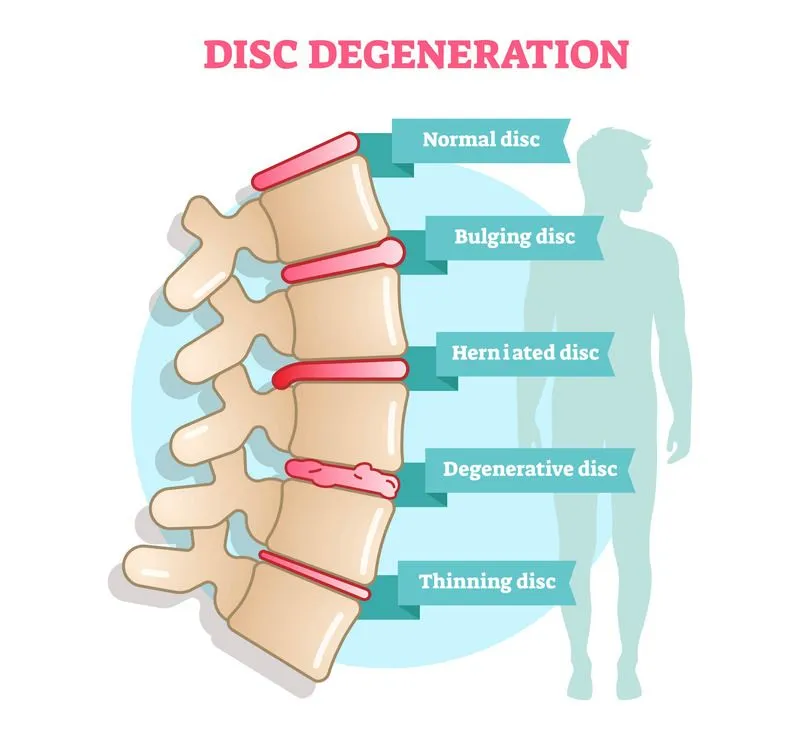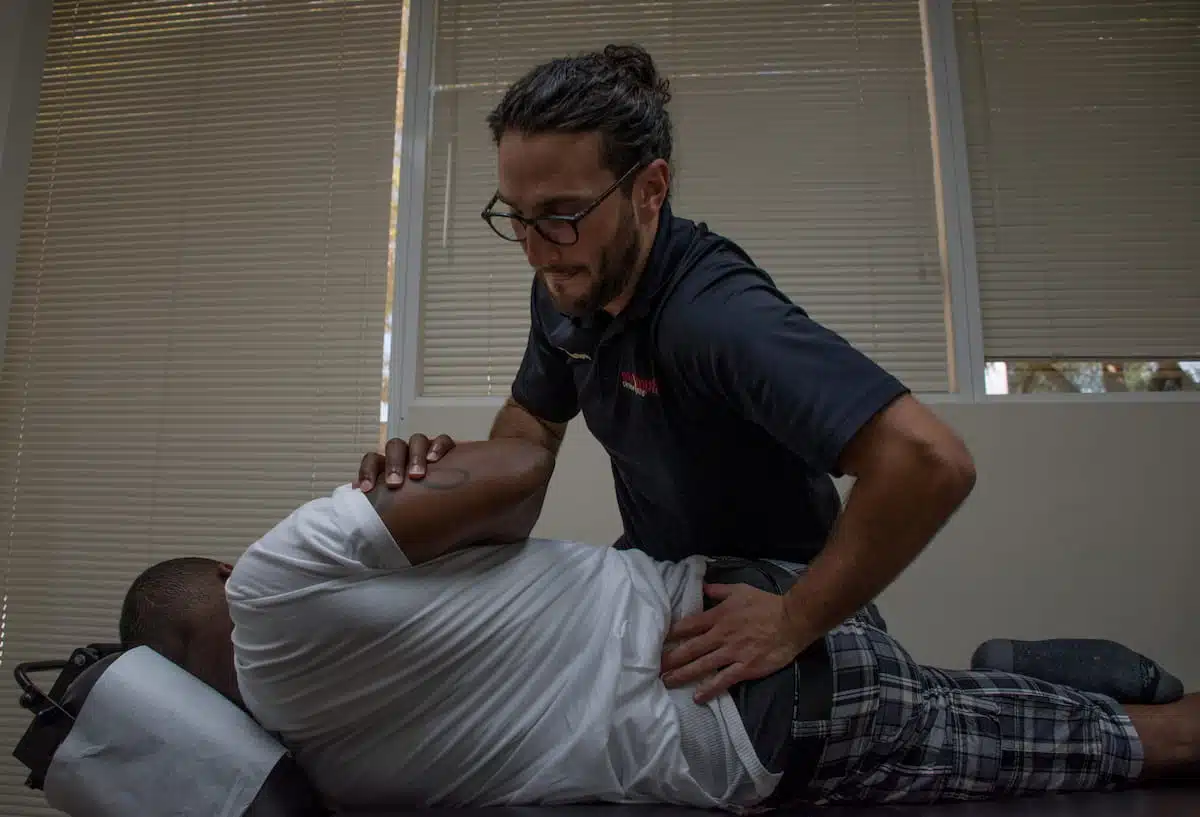Herniated Disc Treatment in Plantation
Anatomy of a Herniated Disc
We hear about herniated disc treatment in Plantation office where Doctor Eric Stumpff treats Herniated Discs. Let's start with one question: What is an intervertebral disc? This is important to understand Disc Herniations. Intervertebral discs are cartilage material between each bony vertebrae. They act as “shock absorbers” for the spine. Intervertebral discs are made of two parts; an inner gel layer known as the nucleus pulposus and an outer fibrous layer known as the annular fibers. The intervertebral disc helps absorb the impact on your spine that you experience through daily movements such as walking, running, sitting, twisting, bending and exercise.
Patients will ask why their back pain is more severe when they have only been sitting. While in a seated position, the hip muscles are not as active as when you are standing. This creates more pressure through the lumbar spine and surrounding musculature. An increase in pressure through the spine coupled with improper posture can lead to increased pressure on the intervertebral discs.

Stages of a Herniated Disc
There are different stages of a disc herniation. Many times, it is used as an umbrella term to include a disc bulge, disc protrusion, disc extrusion and disc sequestration.
Disc bulges are more common than disc herniations. A disc bulge means the gel-like nucleus pulposus is contained in the annular fibers - there is no tear to the fibrous layer but the disc starts to bulge out into the spinal canal or nerve root foramen.
Disc protrusions are the start of a true disc herniation. There is a tear through the annular fibers causing the gel-like nucleus pulposus to push through the fibers. The gel-like material may or may not push all the way through the annular fibers into the spinal canal or nerve root foramen.
Disc extrusions occur when the tear through the annular fibers goes all the way through, leading to the gel-like nucleus pulposus pushing into the spinal canal or nerve root foramen.
Disc sequestrations are experienced when part of the gel-like nucleus pulposus is no longer contained within the annular fibers and has separated from the disc. This piece of gel-like nucleus pulposus can be “floating” in the area of the spinal cord or nerve root foramen.
How common are disc injuries?
A study entitled, “Systematic literature review of imaging features of spinal degeneration in asymptomatic populations” (Brinjikji et al., 2014) reviewed imaging findings for over 3000 CT and MRI studies. Participants were separated by age group starting with 20-year-olds and up to 80-year-olds.
The study concluded that spinal degeneration presents in high proportions of asymptomatic patients and this increases with age. Disc bulge presented in 30% of 20-year-olds (even when no symptoms were felt) and 84% of 80-year-olds. Disc protrusions presented in 29% of 20-year-olds and 43% of 80-year-olds.
The findings mean that a disc injury may not be the cause of your pain. Spinal degeneration is common as we continue to age and disc injuries can be an incidental finding if a patient presents with pain. Chiropractors like Doctor Eric Stumpff in Plantation continually assesses his patients in case Disc Degeneration develops.
Non-surgical Treatment for Herniated Discs In Plantation
At Stumpff Chiropractic, we provide an exam for each patient to determine if a disc injury may be the cause of your pain. Chiropractors will do review of orthopedic and neurological testing through assessing the muscle, joint and nerves along with reflexes, muscle strength, and sensory change helps identify the cause of your pain.
Chiropractic offers relief for disc related injuries through spinal manipulation, manual therapy such as Instrument Assisted Soft Tissue Mobilization (IASTM) and myofascial release techniques.
The disc is a poorly vascularized structure; unlike a bruise, it will not heal quickly. Because blood supply is low and water content is high in the disc, a dehydrated disc is more susceptible to injury and healing time can be exponentially longer than somewhere else in the body. In addition to the treatment mentioned above, non-surgical spinal decompression can relieve disc injuries and the pain commonly associated with a Herniated Disc. Non-surgical spinal decompression decreases the pressure and helps elongate discs by creating a negative pressure during the longitudinal pull. As this pull increases, it also forces the intervertebral disc, allowing the gel-like nucleus pulposus to return to its proper position, and relieving pressure placed on the nerve root. As a pull occurs, more fluid and blood rush to the area being treated to help the healing process. More oxygenated blood = quicker healing time.

Disc Herniation Treatment from a Doctor of Chiropractic
Many patients will benefit from chiropractic care for their herniated disc treatment in Plantation injuries, but of course there are exceptions and most Chiropractors know this. In some cases, if there is no improvement to disc injuries, referrals to spinal surgeons and/or pain management physicians will help heal the injury. Co-management between our office and other providers will help the patient and their disc injuries. Chiropractors have been working hand-in-hand with other Doctors and physicians to achieve optimal care for their patients.
Our Plantation Chiropractor provides treatment and pain relief for patients suffering from herniated discs, disc bulges, disc degeneration, and disc derangement. If you're curious about what a chiropractor does or what chiropractic care involves, please visit our FAQ Page. We keep a list of all chiropractic conditions that Dr. Stumpff treats. Call us today at (954) 737-1306 to learn more about how we can help you with your chiropractic needs in Plantation!
